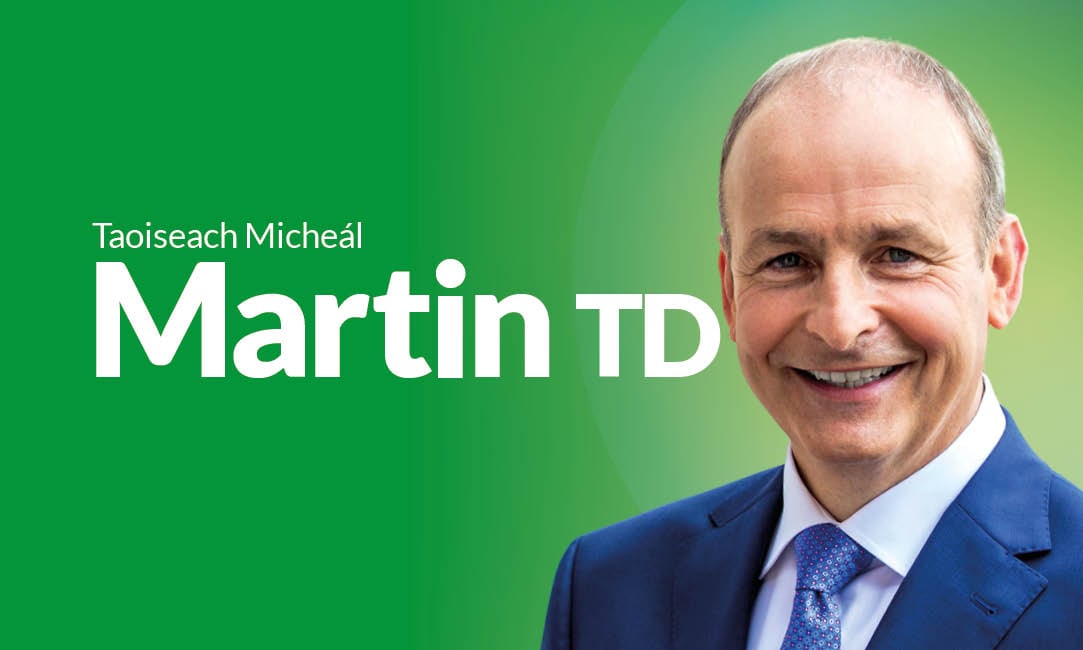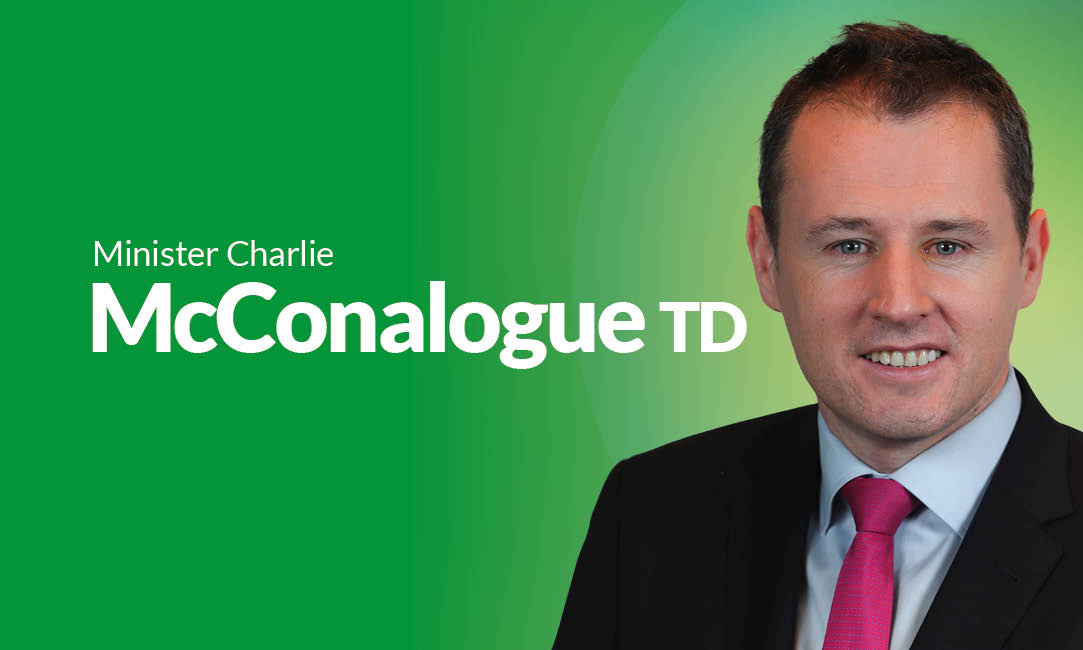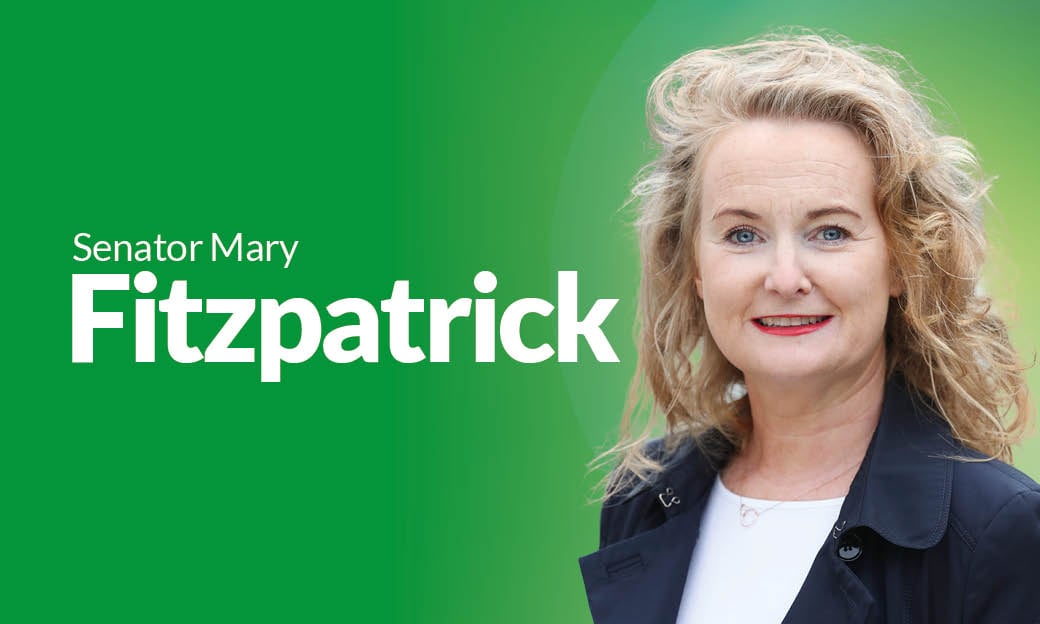Keynote by the Taoiseach, Micheál Martin T.D., at Ireland’s second National Biodiversity Conference
Published on: 09 June 2022
Dia dhaoibh ar maidin a chairde.
Is mian liom mo bhuíochas chroíúil a chur in iúl do na h-airí Daragh O’Brien, Malcolm Noonan agus Pippa Hackett as ucht an cuireadh uathu chugam a bheith in bhur dteannta chun an t-ábhar rí-thábhachtach seo a phlé.
Idir sibhse atá sa halla seo inniu agus iadsan atá ag glacadh páirt go fíorúil, tá pobal faoi leith bailithe le chéile, pobal eisceachtúil atá ag treabhadh libh bliain in ndiaidh bliana ar leasa an domhan nádurtha atá thart orainn. Sibhse a d’aitheann le blianta fada an baol ina bhfuileamar maidir leis an slad a bhí agus, is oth liom a rá, atá fós á dhéanamh ar dúlra na cruinne.
Cé go bhfuil dúshlán mór romhainn i gcónaí, molaim sibh as ucht an obair atá déanta agus atá fós á dhéanamh agaibh ar ár son.
Good morning everybody. I’m delighted to join you this morning to deliver this address at Ireland’s second National Biodiversity Conference.
I understand that you all had an inspiring and productive day yesterday. You heard from Elizabeth Maruma Mrema, the Executive Secretary of the UN Convention on Biological Diversity, and Stefan Leiner, the Head of Biodiversity Unit at the European Commission’s Directorate General for Environment, as well as my colleagues Minister O’Brien, Minister Noonan and Minister Hackett, and a wide range of national experts and leaders on biodiversity.
I hope today is every bit as productive and from a personal perspective I’m very glad to have the opportunity to share some thoughts on biodiversity, and express my support for your work and for your deliberations, which I believe are vitally important to the future of our country.
As I just said in Irish, those who are gathered here, in this hall and those attending virtually are part of an exceptional community. Through your professions, your academic research, your voluntary organisations or your position in the public service, you have acquired a deep understanding of the relationship between our human endeavours and the natural world around us.
Many of you have worked tirelessly to convince those of us in the political and policy spheres of the dangers to us as humans and to our way of life of our continued destruction of nature.
It is fair to say that your message has not always been heeded. It is probably also fair to say that it is still not being adequately incorporated into our decision making across so many spheres of activity, both globally and closer to home.
But I do sense a deepening acceptance, a growing realisation that our fortunes as a species and a society are inseparable from the fortunes of the natural world of which we are a part.
The value of nature has become increasingly apparent to us all throughout the pandemic. For myself, nature is a constant source of wonder and solace – and something that brings me great joy. Whether walking in Courtmacsherry or on one of my visits to the old oak woodland in Wood Point, there is something inside that resonates deeply with these natural surroundings, and a feeling of wellbeing that cannot be replicated in other settings.
When I launched the all-island Climate and Biodiversity Research Network last November, I recalled the landmark 2019 global assessment on biodiversity loss. Echoing strongly the themes of this conference, it stated that:
“Nature is essential for human existence and good quality of life. Most of nature’s contributions to people are not fully replaceable, and some are irreplaceable”.
The great mistake of our species is to think that we are somehow separate from nature; that we can continually hollow out natural systems without consequence for our own wellbeing.
Nature provides the essentials for human life, and it must be treated with the respect that it deserves.
The Biodiversity Challenge
You all know the statistics on biodiversity loss. You know what the science says. Many of you have been involved for many years in communicating it to people like me.
The message is being heard and the consequences of biodiversity loss are more clearly understood.
We also understand that successfully addressing the reality of biodiversity loss is very challenging. That assessment won’t surprise anyone here in this room today. This is the case for a few reasons.
Firstly, nature underpins so much that is fundamental to our existence. Clean water, food, a stable climate all depend on functioning natural systems. As a species, we allowed ourselves to forget that truth and to become undisturbed by a persistent deterioration of ecosystems, species and habitats.
Secondly, the many actions that contribute to biodiversity loss, the endless chipping away at the web of life… they rarely make the headlines.
A couple of trees here, a wet corner of a field there, a small bit of a hedgerow over there… Slowly and almost imperceptibly, biodiversity/nature/wildlife, call it what you want, has been slowly squeezed out of our landscapes and, indeed, our seascapes.
Which brings me to my third reason. Too often, we forget that we all depend on nature for everything we have. What is good for nature is ultimately good for society and the economy.
Sometimes we have lost sight of this– we didn’t understand well enough the ecological consequences of our actions, or the social or economic prerogative did not take the value of nature into account
But we know better now and our understanding is deeper. We must now, globally and at home, find a way to shape our activities to continue to provide the social and economic benefits that we must have, while safeguarding the natural world on which we depend.
Nature in Ireland
As we mark the Centenary of our State, we acknowledge the vital role the vast peatlands, rich agricultural soils and mighty rivers of Ireland have played in the development of our society and economy.
As we look to the future, we do so in the knowledge that those same ecosystems are vital to the resilience of our society, climate and economy over the next hundred years and the centuries to follow that.
We must think long-term and not be afraid of changing how we do things to meet the challenges of our new reality.
Ensuring that resilience demands a bold, ambitious and integrated vision for the future of nature, water and carbon.
Biodiversity loss and climate change are deeply interconnected challenges: climate change accelerates biodiversity loss, and biodiversity loss drives climate change.
Furthermore, restoring biodiversity can help to reduce carbon losses from our land, sequester carbon emissions, and improve the climate resilience of our ecosystems.
We need to find a way forward that will help us to adapt to a future with a changed climate, make space for nature to thrive, and empower a renewed economic and social vibrancy within our rural communities.
The challenges ahead of us are substantial. The approaches that brought us to this point will not suffice.
Some part of our human psychology will seek to wish away or deny what is so clearly happening around us but that is no answer. Ní neart go cur le chéile. We must work together, for all our sakes, and find a truly sustainable path forward.
Work is already underway to restore and rehabilitate our peatlands, consider and renew our approach to forestry, create a network of Marine Protected Areas, and review the way we use our land.
The Government I lead is making good progress on these fronts, but there is a long path to travel yet.
National Biodiversity Action Plan
Today, you have all gathered here in Dublin Castle to discuss and shape our fourth National Biodiversity Action Plan – Ireland’s keystone policy for the recovery and restoration of nature – which will help to guide us along that path.
It is being coordinated by the National Parks and Wildlife Service, an ever evolving organisation staffed by some 400 dedicated and passionate advocates for nature.
The Government recently approved the full implementation of the Strategic Action Plan to renew the NPWS, and its transformation into an Executive Agency. This renewal is a significant milestone, but it’s important that we are mindful that biodiversity action and protection goes far beyond the remit of the National Parks and Wildlife Service.
Like climate change, biodiversity loss will only be successfully tackled as an all-of-Government and all-of-society project, which will require the vigilance of planners, local authorities, agricultural advisers and all manifestations of state who have a hand in regulating interventions in our land, rivers, lakes, seas and air.
As a society we must not shy away from being more ambitious about protecting and restoring nature. All sectors have a role to play, and in that context I’d like to recognise the crucial work of farmers, fishers, foresters, businesses, educators, young people and community groups as agents of change in championing biodiversity and taking action to reverse its loss.
We’ve seen how well we can work together in a crisis – whether public health, international security, or indeed on climate. Biodiversity is no different.
All-island Basis
In that regard, an all-island approach to addressing biodiversity loss is essential in Ireland. Together, we must develop integrated land and sea, urban and rural, North and South, East and West, biodiversity solutions that can be deployed in a fair and just manner, and maximise co-benefits for people and the planet.
Biodiversity does not recognise borders, and so the Government, working with our partners in Northern Ireland, wants to work more strategically to address shared biodiversity challenges on this island.
Last year, as part of the revised National Development Plan, we set new Shared Island investment objectives to support more all-island approaches to biodiversity protection, and to conserve our cross-border region peatlands.
Earlier this year, the National Economic and Social Council also published comprehensive research on Shared Island: Shared Opportunity, which identified a strong ambition and vision among stakeholders, North and South, to work more effectively on climate and biodiversity on a cross-border basis. We are now working to put that shared ambition into practice.
This year, the Government will bring forward a new Shared Island Community Climate Action Scheme to support cross-border and all-island partnerships including to deliver nature-based interventions that enhance biodiversity and support climate resilience.
And through our €1bn Shared Island Fund, we are ready to make other strategic investments in pioneering biodiversity actions on a North/South and all-island partnership basis.
Community Action
Indeed, many successful examples exist of society coming together to deliver real impact for rural communities and nature.
The Burren Programme led the way some 20 years ago by putting farmers at the centre of an innovative results-based payment scheme.
This pioneering initiative has since informed many others, including some that focussed their efforts on species like the hen harrier, freshwater pearl mussel and corncrake, and others that focussed on habitats like machair, raised bogs, pristine rivers and blanket bogs.
Results-based, community-level projects like these are the way forward for nature, and I’m glad to see them reflected in the cooperation project areas under Pillar 2 of Ireland’s CAP Strategic Plan. I envisage even more ambition in the National Biodiversity Action Plan.
These approaches can bring benefits for biodiversity as well as for the climate, and it’s vital that we employ both lenses when identifying solutions. But there are fundamental differences between the two.
With climate, you can set national targets and sectoral emissions ceilings for metric tonnes of carbon. But nature isn’t like that. We can’t measure it in tonnes, the indicators are more complex, the action is at the level of the field – and that field is usually owned and worked by somebody.
This is why communities need to be at the heart of biodiversity action, and I’m hopeful that the Citizens Assembly on Biodiversity Loss will give us much to consider in this regard.
And I’m glad that the new National Biodiversity Action Plan will be able to respond to both the Citizens’ Assembly on Biodiversity Loss and the forthcoming Young People’s Assembly on Biodiversity.
Global Collaboration
Collaborative approaches are urgently needed at the global level, too. The degradation of our natural environment is a major threat for the stability of societies, and their peace and security, worldwide.
It is also aggravating poverty and inequalities, as well as hunger and malnutrition.
In September 2020, at the United Nations Summit on Biodiversity, I signed the Leaders’ Pledge for Nature, and in so doing committed to putting biodiversity, climate and the environment at the heart of national and international development and cooperation.
93 world leaders have also signed this pledge, which recognises that we need to appropriately value nature and the support it provides, as we make decisions.
It recognises that the business case for biodiversity is compelling: the benefits of restoring nature outweigh the costs ten-fold, and the cost of inaction is even higher.
Closing Statement
A chairde,
Nature and biodiversity underpin human life on earth, and our lives are all the poorer for their loss.
When we look to the future and contemplate the world we are leaving for our children and grandchildren, we know instinctively that a healthy, thriving natural world is integral to their wellbeing and to their own future prospects.
The rich tapestry of the natural world has been our inheritance. In many ways we have fallen short in protecting it.
But knowing what we know, we can resolve to change our approach and put the protection of nature and climate at the heart of our decision making.
As the film maker, activist and later Senator Eamon de Buitlear said back in 1987, “I will keep on chipping away with my hammer and chisel until the system begins to understand that we have a country which is nothing short of a jewel, and we do not really understand what we have and what we stand to lose.”
It’s taken us too long but I think that, today, we do understand what we have, and we have a very real sense of what we stand to lose.
The time has come for a new era of stewardship of our natural world. We must follow the science and urgently turn things around for the good of all people and our planet.
Building biodiversity awareness, knowledge and action is key and I commend your conference for its contributions to these ends.
Most importantly, alongside the evident challenges, we must look to solutions, which I know you have been considering at length. We must not shy away from what needs to be done.
Molaim sibh as ucht and tógra thabhachtach atá faoi bhun agaibh, as ucht bhur ndíogras ar son an dúlra agus as ucht bhur n-iarrachtaí ar mhaitheas muintear na hÉireann agus na glúnta atá le teacht in ár ndiaigh.
I thank you for your work, and I wish you all the very best in your deliberations today.
Go raibh mile maith agaibh.



